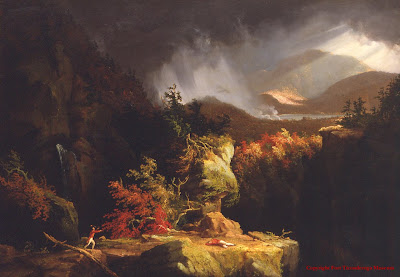 Fort Ticonderoga has been awarded a grant in the amount of $3,000 by The Felicia Fund, Inc. of Providence, Rhode Island. The funds will support the upcoming exhibit, The Art of War: Ticonderoga as Experienced through the Eyes of America’s Great Artists exhibit. The new exhibit, scheduled to open in May 2011, will feature fifty works from Fort Ticonderoga’s extensive art collection together for the first time in a single exhibition. Included will be important American works by Thomas Davies, Thomas Cole, and Daniel Huntington.
Fort Ticonderoga has been awarded a grant in the amount of $3,000 by The Felicia Fund, Inc. of Providence, Rhode Island. The funds will support the upcoming exhibit, The Art of War: Ticonderoga as Experienced through the Eyes of America’s Great Artists exhibit. The new exhibit, scheduled to open in May 2011, will feature fifty works from Fort Ticonderoga’s extensive art collection together for the first time in a single exhibition. Included will be important American works by Thomas Davies, Thomas Cole, and Daniel Huntington.
The funding from The Felicia Fund supports the research, construction, and installation of the exhibit. The exhibit will use the artwork to explore human interaction at the Fort from the 18th century through the early 20th century. Fort Ticonderoga helped give birth to the Hudson River School of American art with Thomas Cole’s pivotal 1826 work, Gelyna, View Near Ticonderoga, the museum’s most important 19th-century masterpiece to be featured in the exhibit.
Beth Hill, Executive Director, said the generous grant provided by The Felicia Fund will “utilize the museum’s art collection to engage visitors with the role art played in memorializing the events that took place at Fort Ticonderoga and to encourage participatory activities that make the visitor experience part of the Fort’s continued legacy.”
The exhibit is being developed through collaboration with Winterthur Museum Graduate Program of the University of Delaware.
Christopher Fox, Fort Ticonderoga’s Curator of Collections, said the exhibit “will help the Fort reach new audiences by presenting its magnificent art collections in an exciting new format.”
The Art of War will be exhibited at Fort Ticonderoga in the Deborah Clarke Mars Education Center from May 20th through October 20th, 2011.
Multi-interdisciplinary art-themed educational programs developed with this exhibit will provide new opportunities for students and families to experience Fort Ticonderoga’s history and its 2000 acre campus.
Illustration: Thomas Cole’s “Gelyna, View Near Ticonderoga” (1826), courtesy Fort Ticonderoga.